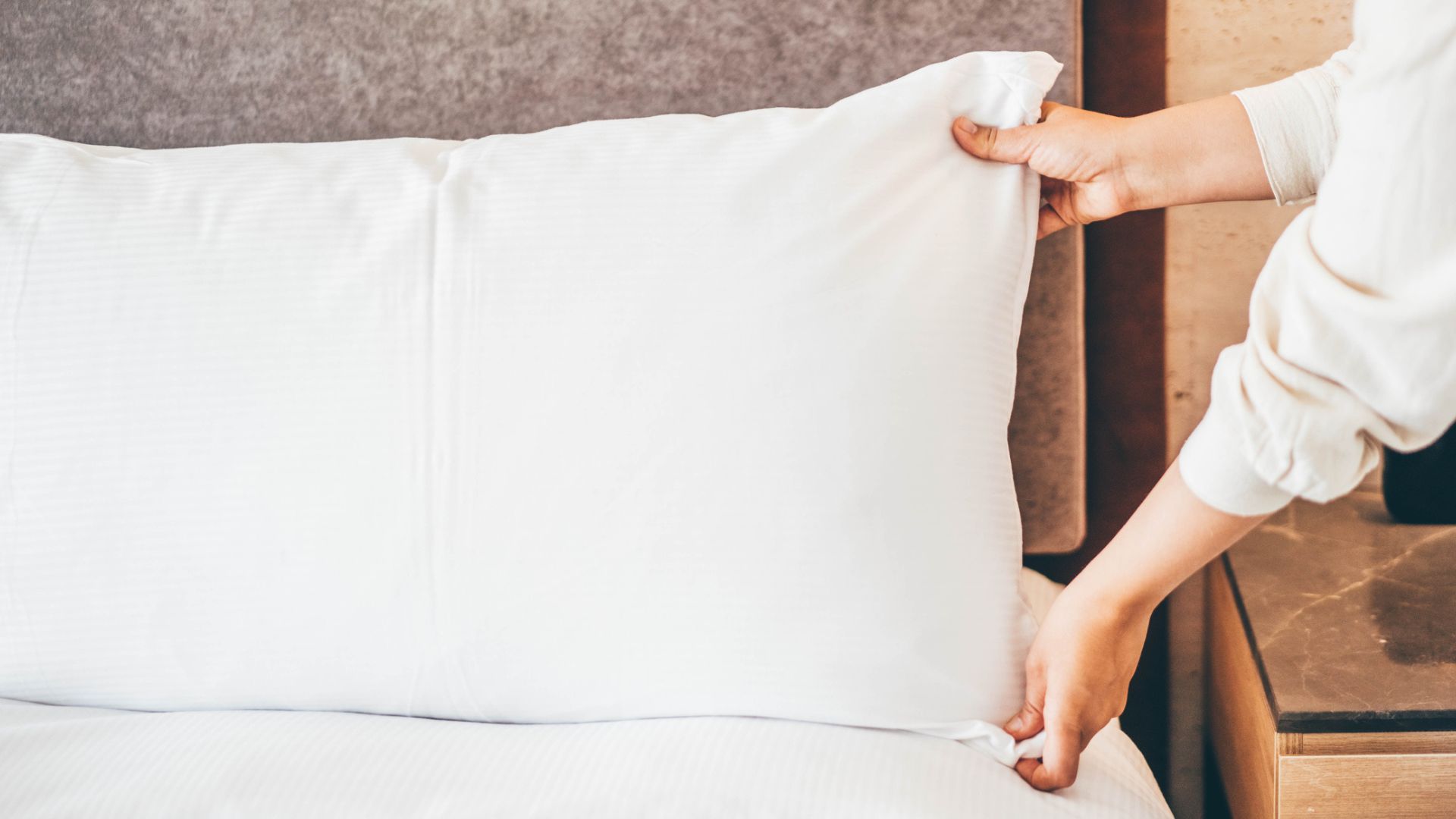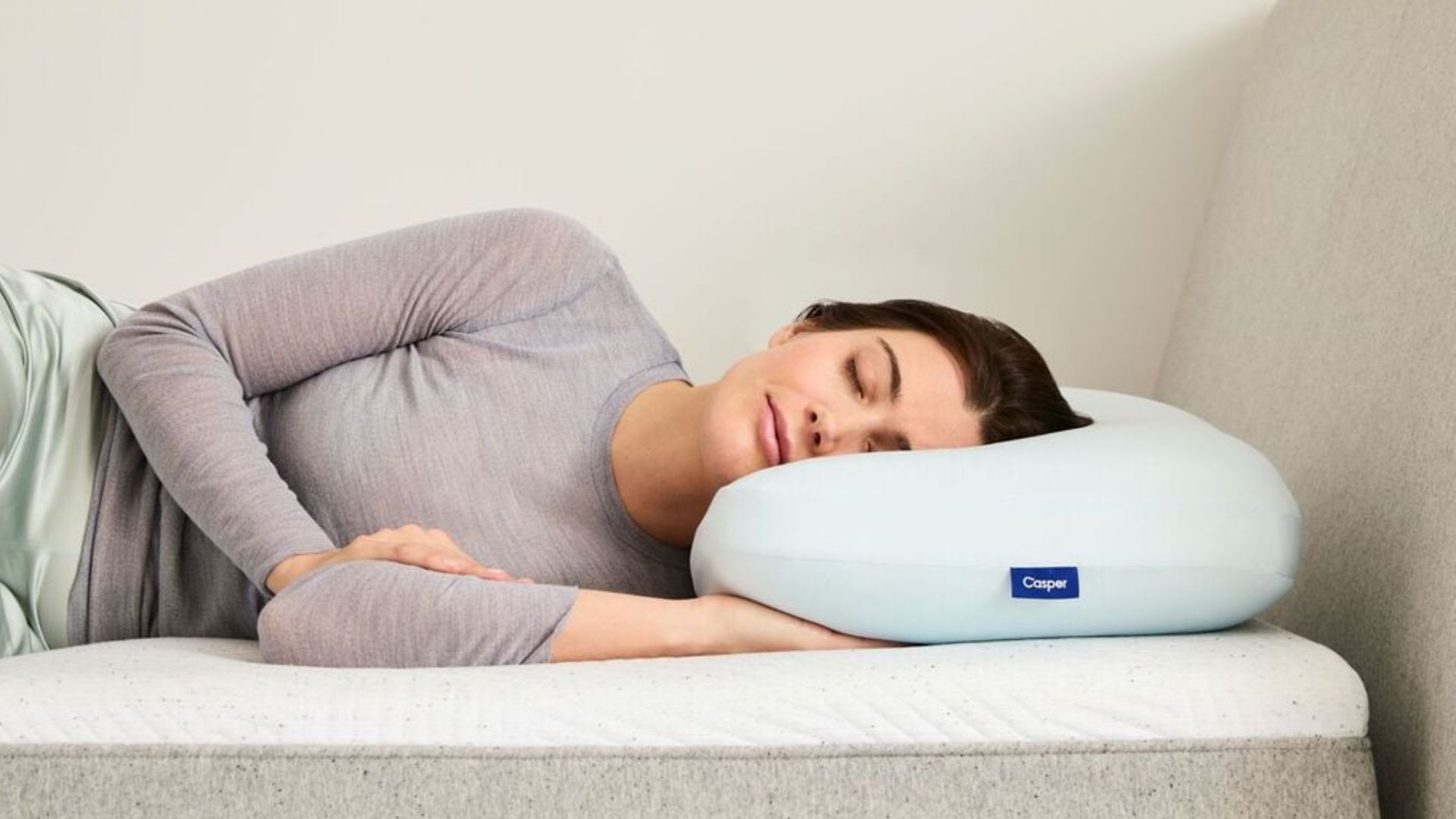What are pillows made of?
What different pillow stuffing means for your sleep

A decent pillow can make an enormous difference to the quality of your sleep and comfort of your mattress. But have you ever wondered what your pillow is made of and what each material means for your sleep?
Just like the different types of mattresses listed within our guide to the best mattresses for all sleepers, what your pillow is made from can vary. Latex, memory foam, microfiber and down feathers are all common types of pillow stuffing, with each material offering something different in terms of comfort and support.
Here, we’ll outline the common types of pillow stuffing, plus explore in closer detail how each material may benefit your sleep. Let's get started.
What are pillows made of?
There is no single pillow that will suit everyone. This is why our best pillow guide lists our top recommendations for all sleepers, so you can choose the one that is right for you. While these are made from different materials, some use a combination of several elements for maximum comfort and support. Let’s explore what the main filling materials are...
Memory foam
Just like the best memory foam mattresses, memory foam in pillows provide cradling comfort and contouring to your head. In pillows, it's either used in solid or shredded form. These types are usually available in different firmness levels which you can choose as per your preferences. The material, however, can be prone to trapping heat and therefore might not be the best option for hot sleepers. However, exceptions include memory foam pillows infused with cooling technology, such as the Casper Foam Pillow with Snow Technology, which is designed to keep you cool throughout the night.

Latex
Like memory foam, latex is also found to be solid or in clusters in pillows. Solid latex pillows are firmer while those which use clusters are more adjustable. Natural latex pillows are a great option for people who are inclined to organic products, being derived from rubber trees. Meanwhile, synthetic latex mimics the properties of natural latex, but is a man made product.
Latex pillows are often bouncier than memory foam and are known to be soft, durable and cooling. An example would be the Purple Harmony Pillow which uses a blend of Talalay latex and hyper-elastic polymer.
Down
Naturally known for its softness, down is one of the most expensive fillings and is synonymous with plush pillowy comfort. This is because down translates to feathers from a bird’s undercoat. However, a down pillow wouldn’t be the right pick for those susceptible to allergies as down is a common allergen. Down pillows are also not always animal-friendly, so it's best to choose ones which use ethically sourced credentials, like the Avocado Down Pillow.
Down alternative
Materials like synthetic fiber are used to mimic the comfort of natural down, making these effective alternatives. These options are also available at a lower price. Down-alternative pillows are also often preferred by allergy sufferers as they're far less likely to cause or worsen bedroom allergies.
Get instant access to breaking news, the hottest reviews, great deals and helpful tips.
Feathers

Even though it’s perceived to be similar to down pillows, feathers are different in their own way. Down is the fluffier plumage, while feather is flatter with a quill and comes from a bird’s outer covering. It is quite common for pillows to contain a blend of both. It is important to choose feather pillows with a tighter woven cover or an additional fabric layer to prevent the quills from poking through.
Microbeads
Microbeads are the tiny styrofoam-like beads which are often found in travel pillows instead of their traditional counterparts. Known for their sink-in feeling, these will sufficiently support and contour your head depending on the fill weight.
Polyester fiberfill
Also called polyfill stuffing, polyester fiberfill are used in the cheapest pillows in the market and are composed of man-made soft and fluffy polyester clusters. While it’s fairly comfortable and easy to clean, they are less durable than higher quality materials. Polyfill pillows tend to lose shape quickly and can become saggy and unsupportive.
Kapok

Kapok is a material that is similar to cotton, derived from the Kapok tree. It is moisture-resistant, soft like silk and fluffy like cotton, making it another great eco-friendly option. Kapok pillows are also naturally hypoallergenic and odor free. Layla Kapok Pillow, for example, is a medium-firm kapok fiber and memory foam blend, which is a perfect combination for hot sleepers.
Wool
Wool has excellent moisture-wicking and temperature regulating properties, which makes them popular pillow stuffing all-year round. However, while it is soft and often suits all sleepers, wool alone does not provide much support. This is because the filling can flatten or clump over time with regular use.
Cotton
You can rarely go wrong with cotton fillings for pillows as these are soft, naturally breathable and cool. Organic cotton pillows provide excellent support and comfort alleviating conditions like shoulder stiffness and neck pain. It also has moisture-absorbing capacity and is resistant to allergy causing agents and microorganisms. This makes it an ideal choice for pillows covers too.
Buckwheat

Buckwheat pillows contain real buckwheat hulls which provide superior support for your neck and head. These will suit sleepers who require more firmness compared to a soft plush feel from their pillows. Be warned, many people find buckwheat pillows too hard and noisy to sleep on buckwheat pillows, due to the rustling sound they make when you shift positions.
What type of pillow stuffing is right for you?
Now that we have explored all the major pillow fillings and their distinctive pros and cons, we can better understand what pillow material type works for you. This largely depends on your sleep position and needs.
If plush comfort and contouring is something you prioritize, a memory foam pillow is a great choice - particularly if it's packed with cooling technology to prevent your from overheating. For those who are prone to sleeping hot, opt for natural pillow fillings like cotton, kapok, wool or a hybrid using a blend of natural fibers which can keep you cool and fresh throughout the night.
Your sleep position too is greatly affected by your choice of pillow filling. Side sleepers, for example, need soft to medium firm and can benefit from down, memory foam or latex options. Stomach sleepers need low-loft breathable options while back sleepers can opt for medium-thick pillows which can keep their neck and head in perfect alignment with the rest of the body.

Becky is a Sleep Staff Writer at Tom’s Guide covering all things sleep-related including product reviews, research studies, news and explainers. She works on specialist bedding content and is responsible for buyer’s guides like the best pillows for all sleepers and best mattress protectors focusing on popular brands such as Tempur-Pedic, Avocado, Coop Home Goods and more. Becky is a PPA accredited journalist who is keen to explore the intricacies of sleep, its effects on skincare, mental wellbeing and work performance. While not thinking of sleep, she can be seen reading in cosy bookshops or learning about global food culture.
